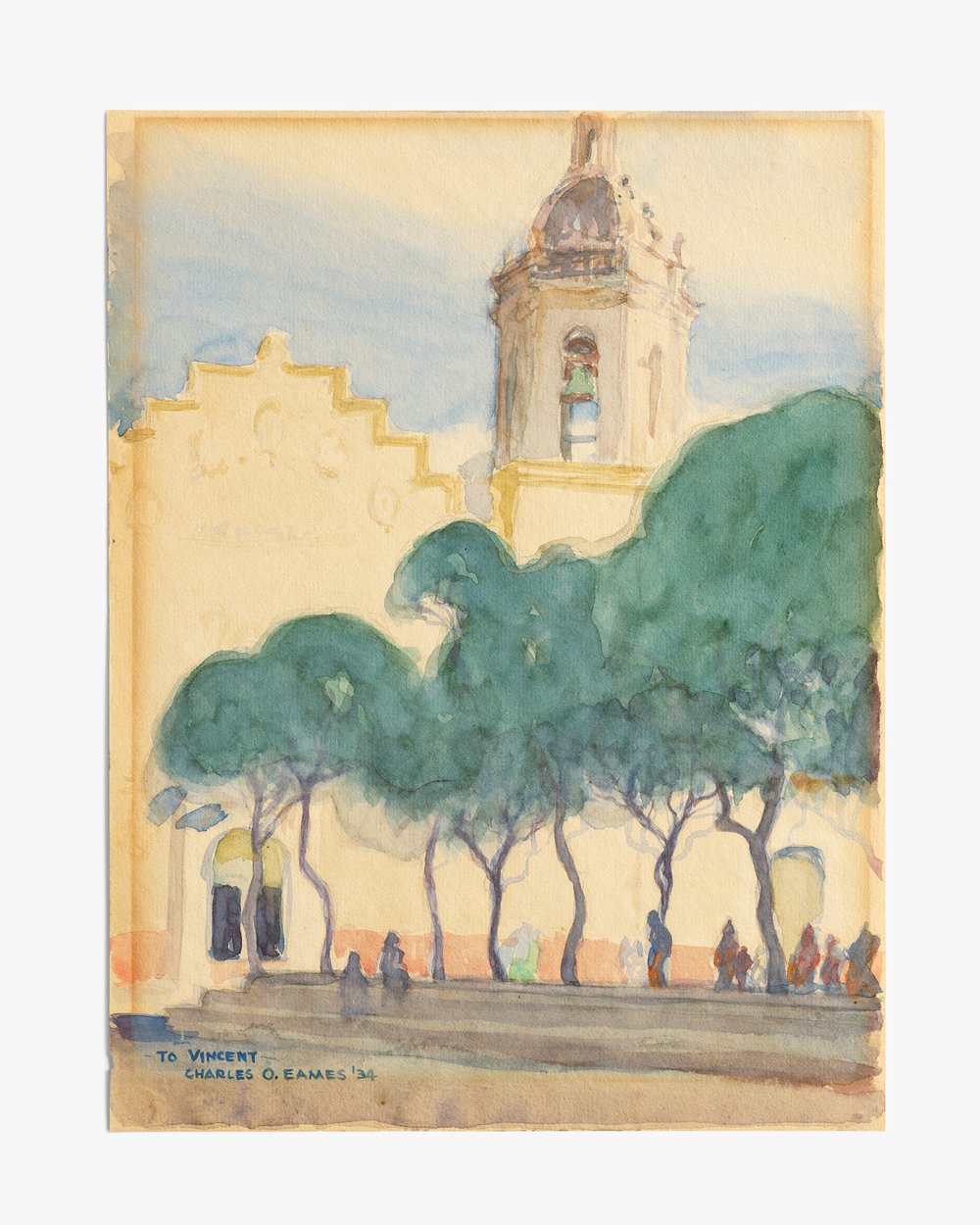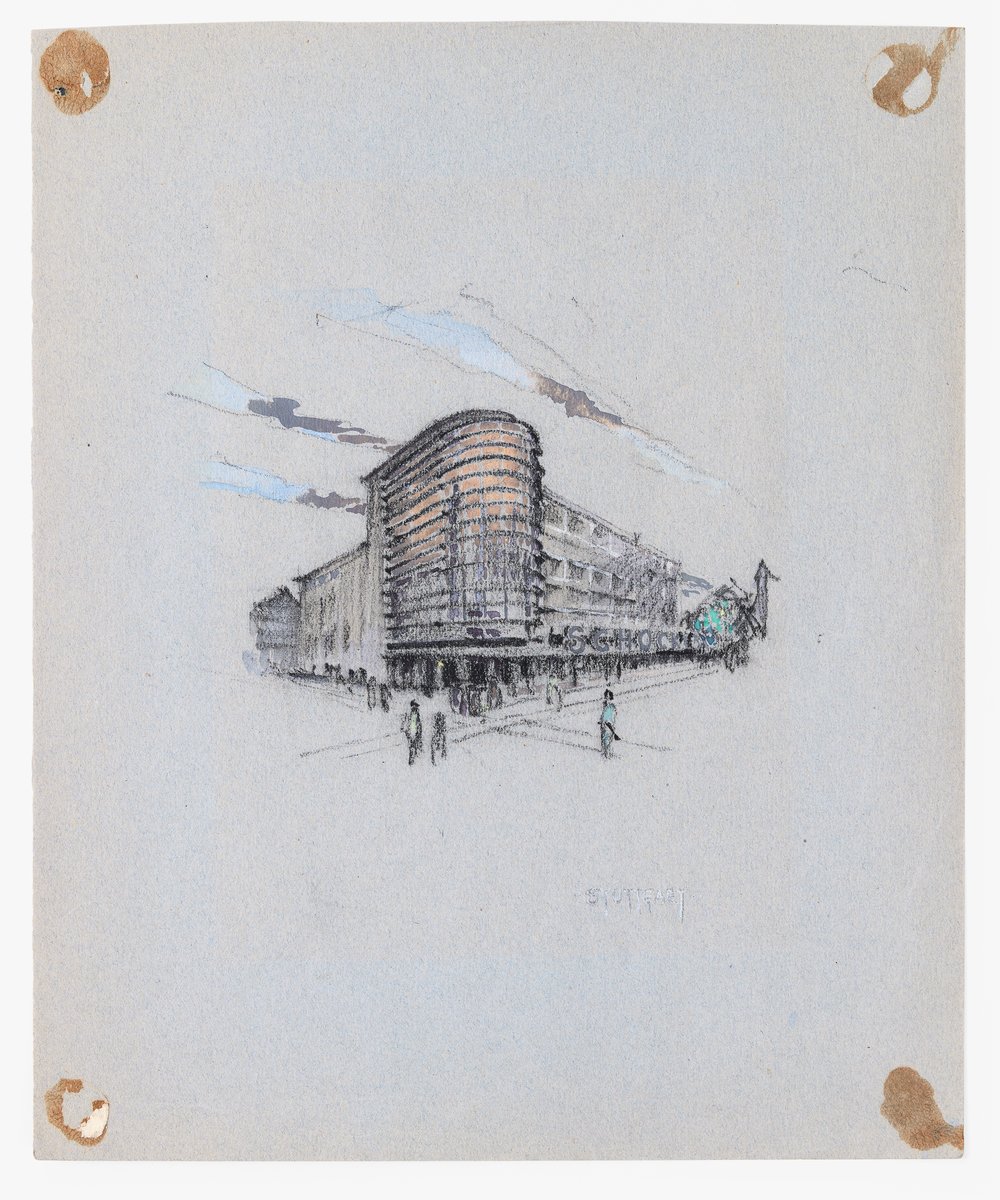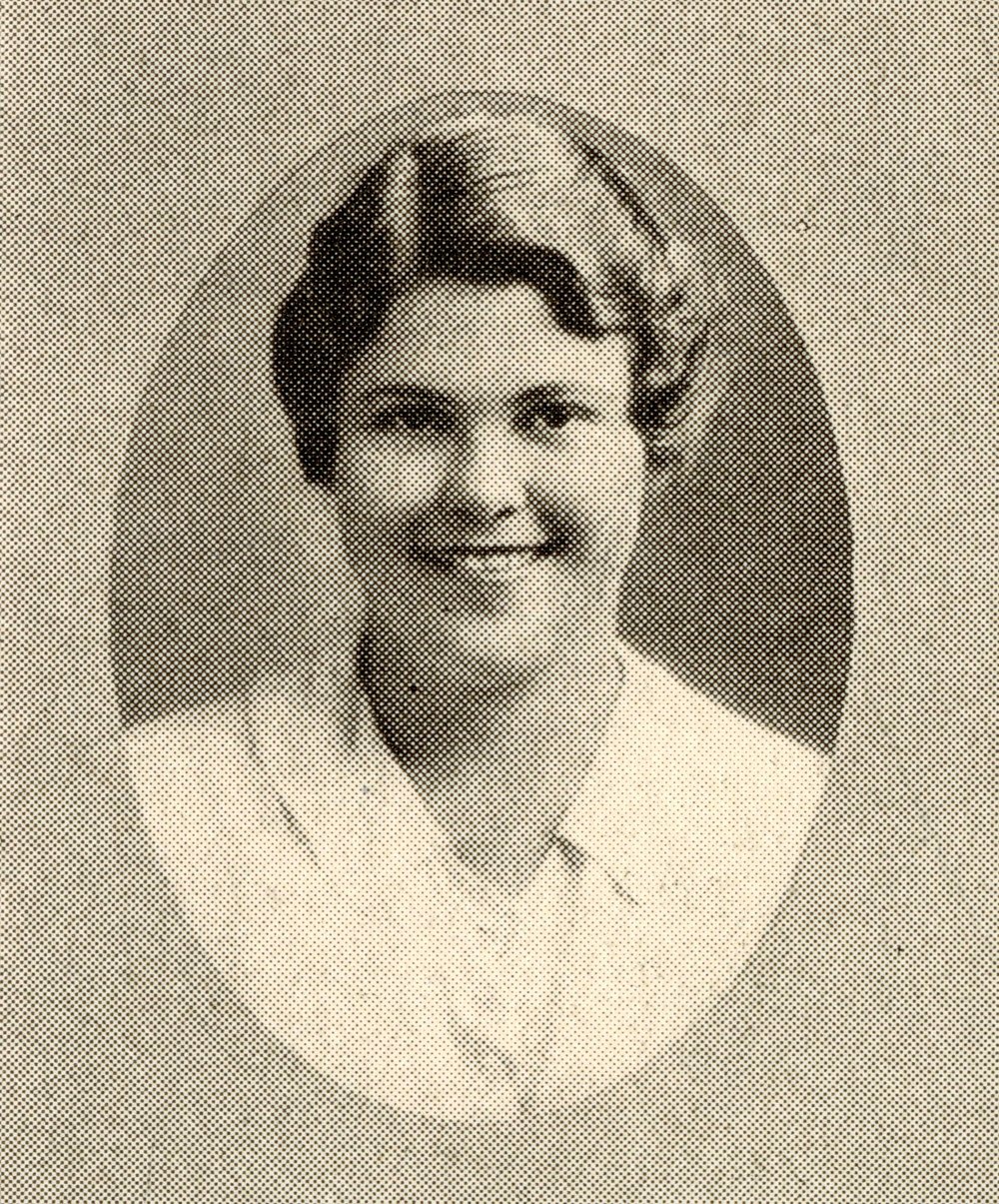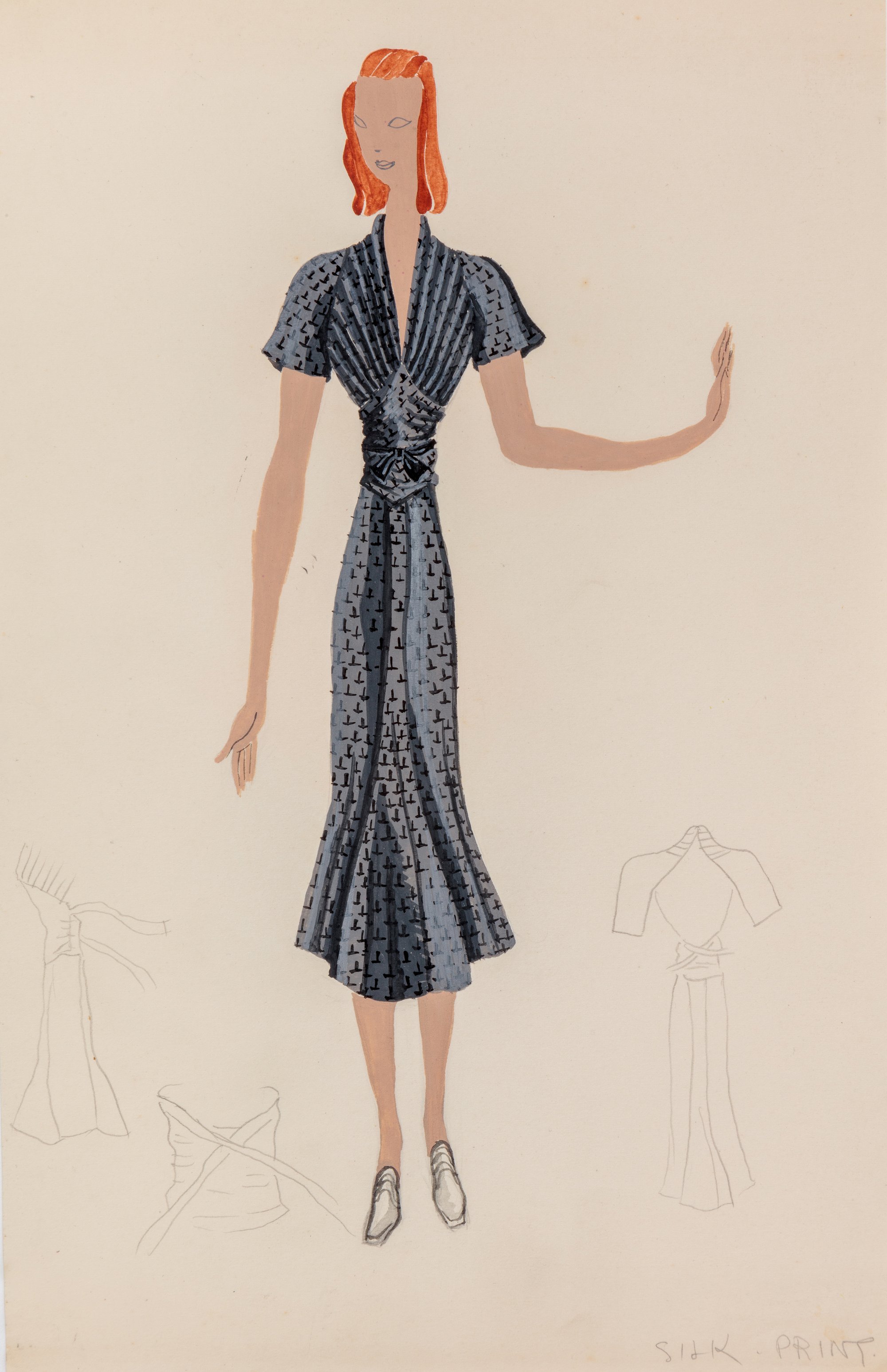Before They Were the Eameses
Fashion Drawing: Black Pleated Day Dress
Ray Kaiser
c. 1939
At twenty, Ray wrote to her mother that she wanted to earn a living in “commercial art, either advertising or costume design.” Six years later, she wrote again saying that her friend Eleanor McClatchy “told me that ‘Fran’ (Francis Hayes) was to give a concert in February and wanted a costume, so I drew up several designs and sent them to Eleanor—who seemed to like them very much.”
- Medium:Ink, watercolor, and graphite on paper
- Credit Line:Image courtesy of Eames Office
- Item:A.2019.2.032
Curatorial Notes
In an interesting play of pleats and pattern, Ray has imagined a sophisticated and complex black day dress of finely patterned silk or rayon. The skirt has center front and back panels that fall into a cascade of folds. The bodice has bias-cut pleats forming a deep V-neck where it joins the softly pleated, wide waistband. This is further encircled by two narrow ties of the same fabric worn tied at center front. These may have been inspired by the wide Japanese obi (“belt”) used to hold a kimono closed, which has a narrow cord looped or knotted in front to help hold the obi in place.
Toward the bottom of the image are three pencil sketches: two on the viewer’s left show details of the wide, pleated waistband around the midriff with narrow ties forming a bow in front. On the other side of the figure, a single pencil drawing shows a back view of the dress as worn. There appear to be fabric panels, possibly of a darker color forming triangular inserts in the skirt at both the front and back of the dress. This dress shows, perhaps, the most complex construction of Ray’s fashion drawings that have survived from the 1930s.
— Dale Carolyn Gluckman
Toward the bottom of the image are three pencil sketches: two on the viewer’s left show details of the wide, pleated waistband around the midriff with narrow ties forming a bow in front. On the other side of the figure, a single pencil drawing shows a back view of the dress as worn. There appear to be fabric panels, possibly of a darker color forming triangular inserts in the skirt at both the front and back of the dress. This dress shows, perhaps, the most complex construction of Ray’s fashion drawings that have survived from the 1930s.
— Dale Carolyn Gluckman



